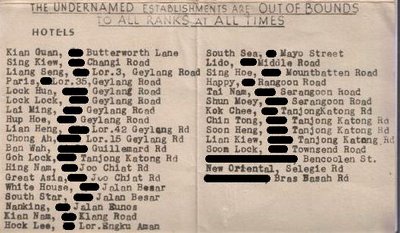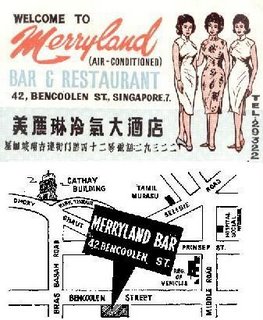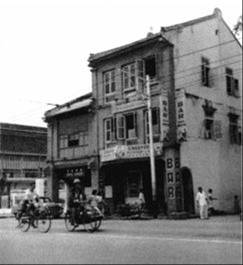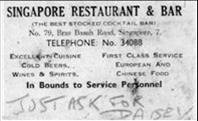First and foremost, every bank clerk must be equipped with a certain machine. It was a machine that was slightly more sophisticated than this one:

It was a manual adding machine:

Don't you dare sniff at it though. It could be operated when there was a power failure - not by batteries, not by electricity but just by candlelight (so that you could see in the dark lah). It also sported a leading brand name in office equipment at that time - Olivetti. (I learnt from a website that the giant Italian company had since changed its business to focus on telecommunications and IT instead. In Aug 2003, the company also adopted the name 'Telecom Italia'.)
The adding machine that I used had a cranking handle on the right. It was meant to be operated with the right hand only as well as by the right-handed only. (I don't know if the company specially designed left-handed models to cater for left-handed people. I certainly haven't seen any left-handed models at that time, except pretty sashaying ones, perhaps.)
When you want to add two numbers, you simply punch in the first set of figures with the fingers on your right hand, punch the addition (+) sign, punch in the second set of figures, then confidently pull back the handle to see the answer appear magically on the paper roll right before your eyes. You are unlikely to mistake the grand total with any other number because the machine was equipped with a red-black ink ribbon that printed totals in red and other numbers in black:


The machine could probably handle all four arithmetic operations, i.e. addition, subtraction, multiplication and division. However, I recall that it was mostly used for addition and hence its name - adding machine. I think decimal points were handled by punching one of the black buttons with a white dot on it. Some of the senior staff could operate the machine so well that their fingers seemed to be 'tap dancing' effortlessly on the keypad. The 'dancing' was interrupted only by the occasional cranking of the handle. And all these were done without so much as a glance at the machine or keypad. It was very much like touch-typing. In contrast, for a newbie like me, I couldn't calculate even half as fast as the seniors although I had my eyes glued to the keypad. I did not stay long enough in the two banks to learn to calculate as quickly as the seniors and probably because of that, I also didn't develop right biceps as big as theirs.
The machine was quite noisy during operation. Every punch of a button created a more than audible 'click-clack' sound - 'click' when punching it and 'clack' when releasing it. The cranking of the handle is even noisier - somewhat like the cocking of a rifle. So if you have a group of clerks operating the machines at the same time, the sound generated could certainly rival that of a casino's jackpot room. Coincidentally, the cranking of the adding machine's handle also looked uncannily similar to the wrestling with the 'one-armed-bandit'.
The machine was so noisy that you could never pretend that you were busy calculating while hiding behind a partition because the lack of noises would easily give you away. So don't even think of calculated (pardon the pun) risks like catching up on your sleep that way at the office after watching an early morning World Cup match.
Not long after I left the banks, life was a little easier for those who stayed on. They had a improved version of the adding machine:


It was the electric adding machine. But it was no less noisy. And not blackout-proof.
I couldn't remember how the supermarkets of that era totalled up your purchases. There were certainly no barcode scanners nor electronic registers then even in Cold Storage which was considered upmarket at that time. The supermarkets probably used a manual cash register which looked like a giant adding machine like these:


But most people were poor then and could only afford to buy from cheaper traditional grocers such as the one shown in the photo below. Her 'cash register' was two Milo cans linked by a rope which ran through two overhead pulleys. (One of the cans could be seen at the left side of the photo.) This 'cash register' operated quite like a seesaw - when one went up, the other went down. The 'closing of the cash register' was achieved by leaving both cans at mid-height, just like the one in the photo.

Such grocers made use of another type of calculator:

The abacus.









